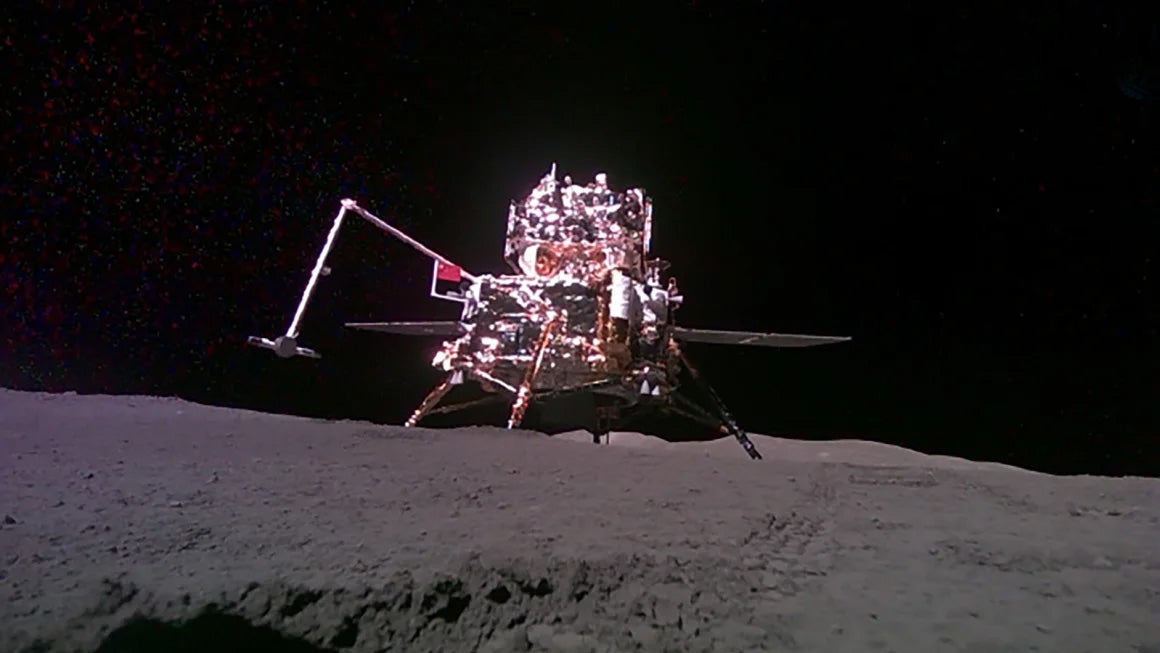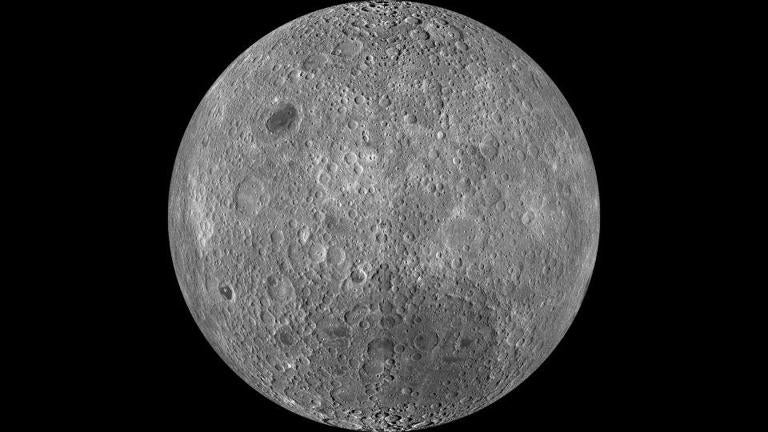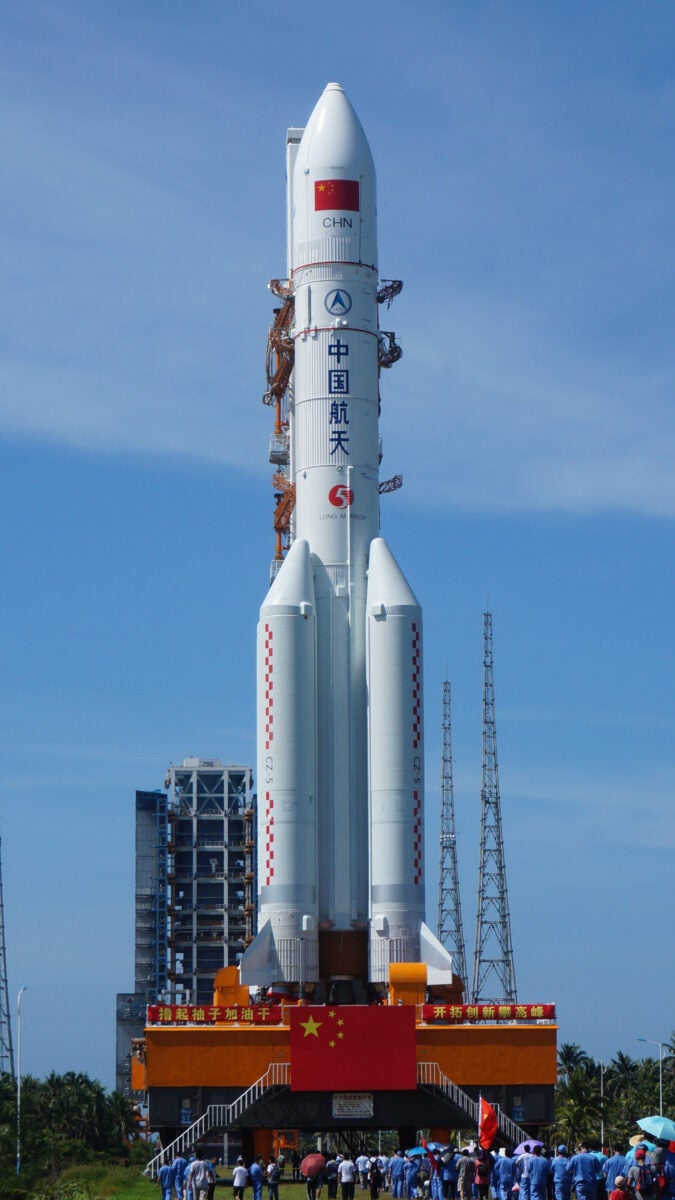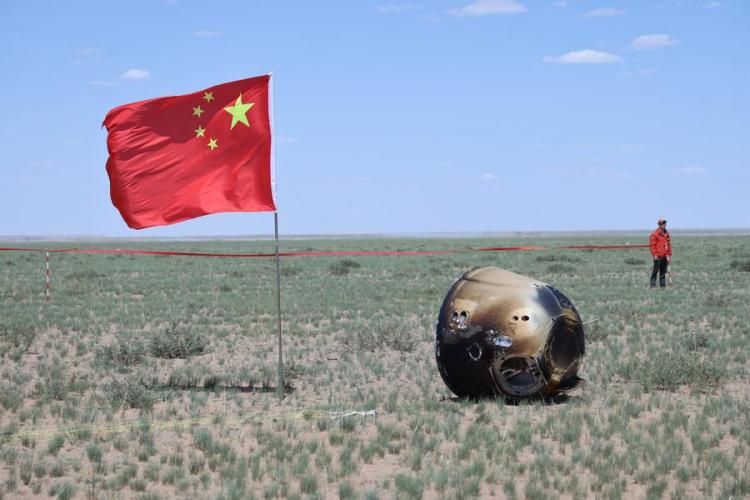
China’s lunar exploration program continues to rack up impressive scientific results. Their methodical progression of lunar orbiters, landers, and sample return missions display a consistent national effort to explore and understand the Moon in the 21st century. Unlike the early American and Russian lunar probes at the dawn of the Space Age that often ended as spectacular fireballs in the sky, China’s lunar program has benefitted from mature spacecraft and rocket technology. The succession of Chang’e spacecraft (named after the mythological Chinese Moon goddess) have enjoyed spectacular successes and delivered insights into the Moon’s geological past.
In a historic first, the Chang’e 6 sample-return mission earlier this year brought 4.27 pounds (1.935 kilograms) of soil and rock samples back from the Moon’s farside. This first-ever sampling of the farside has revealed intriguing evidence of long-term volcanism on the Moon. Previous Apollo missions and the uncrewed Russian Luna and Chinese Chang’e 5 mission returned samples from the nearside of the Moon.
Exciting results from the analysis of the first samples returned from the farside were announced by Q. W. L. Zhang and others in an article published Nov. 15 by the prestigious science journal Nature. The Chinese team studied 108 basalt fragments from two small lunar soil samples scooped up by the robotic arm on the Chang’e 6 lander on June 2, 2024 and returned to Earth later that month.
By studying the decay of isotopes in the samples, scientists found that most of the samples were about 2.8 billion years old. But surprisingly, one basalt fragment formed around 4.2 billion years ago.
The farside enigma
When comparing the near and farsides of the Moon, one wonders if they are from the same world. Vast sheets of basalt, the dark volcanic rock that creates the caricature of the “man in the-Moon,” covers only 18 percent of the Moon’s surface. The nearside hosts 93 percent of the basalt fields while only seven percent lie on the farside. The recovery of the farside basalt by the Chang’e 6 mission presents an exciting opportunity to study a rare part of the farside of the Moon.
Prior to the daring Chang’e 6 landing, the chemistry of the farside could be implied only by remote sensing by spacecraft in orbit. Since NASA’s Lunar Orbiter missions mapped the farside in the late 1960s, scientists have understood that the lunar farside differs greatly from the nearside. The farside lacks large maria like the nearside, contains more large basins, and the farside crust is thicker.

Chang’e 6 was targeted toward the southern basalt mare patch within the Apollo Basin, which itself lies in the northeastern side of the South Pole-Aitkin Basin that spans much of the farside’s southern hemisphere. The basalt within the Apollo Basin lies 3.4 miles (5.5 kilometers) below the mean lunar elevation and represents one of the Moon’s lowest points. This low elevation allowed ancient volcanism to breach the normally thicker farside crust and present rare samples of farside basalt.
Putting the Chang’e 6 sample return results into modern lunar perspective, planetary geologist and Brown University professor emeritus James Head told CNN in June, “The enigmatic lunar farside is so different from the lunar nearside in so many ways, that without returned samples, lunar scientists can’t fully understand the moon as an entire planetary body. Returned samples from Chang’e 6 will permit major strides to be made in solving these problems.”
A key finding was Chang’e 6’s recovery of a high-aluminum-content basalt fragment that dates from 4.2 billion years ago and is the oldest known sample of KREEP basalt, or slightly radioactive basalt containing a mineral compound of potassium (K), rare earth elements (REE) and phosphorus (P). Previously, KREEP basalts were detected only from Oceanus Procellarum and Mare Imbrium on the nearside.
To explain why KREEP is so localized on the nearside, some astronomers suggested that another, smaller Moon formed after the collision of the proto Earth and a Mars-sized object about 4.5 billion years ago. It’s widely accepted that our present Moon formed from the collisional debris. But the “big splat” hypothesis held that the smaller, second moon soon pancaked into the larger current Moon, its material creating the thicker farside crust while the impact shock propelled radioactive material to the surface of the Procellarum Basin now cradling present day Oceanus Procellarum and Mare Imbrium. The discovery of KREEP basalts on the farside of the Moon calls for reevaluation of the idea that the impact of a smaller second Moon thickened the farside crust and shifted the KREEP material toward the nearside. If KREEP basalts are indeed native to the farside as well as the nearside, the second moon hypothesis may join the growing list of now disproven lunar evolution ideas.

Part of the challenge is understanding both the physical extent and the time periods of volcanism on the Moon. Apollo, Russian Luna, and the Chang’e 5 nearside samples have established nearside volcanism occurred as early as 4 billion years ago and as recently as 120 million years ago. But to date, only the Chang’e 6 has sampled the farside basalts.
Other basalt samples recovered by Chang’e 6 date from 2.8 billion years ago and are devoid of KREEP. The implication is that over the 1.4 billion years between the eruption of the farside KREEP-rich sample and the later KREEP-poor samples there was a fundamental change in the source of the magma feeding the eruptions. The smaller a planetary body is, the quicker it cools after its fiery formation. With the depletion of heat-inducing radioactive elements, other sources of magma-producing heat must be present. This calls into question why a small body like the Moon remained internally hot for nearly its entire existence.
More data to come
A sample from a single farside location is far from definitive proof for any idea about the strange dichotomy between the lunar near and far sides. But the Chang’e 6 samples add another data point that will contribute to the eventual understanding of the Moon’s evolution. Because impact scattering can distribute basalt samples thousands of kilometers from the source, care must be taken to ensure a local basalt sample is native to its sampled location. Fortunately, the 4.2-billion-year-old Chang’e 6 KREEP-rich basalt sample provides additional clues about its original location. The sample displays a pristine magmatic texture and does not possess any impact-induced fractures, leading to high confidence that the ancient KREEP-rich basalt sample did indeed originate within the Apollo Basin.

NASA’s Commercial Lunar Payload Services program (CLPS) promises to deliver more science instruments to the Moon in the near future, with three missions planned for farside explorations. These missions promise to provide more data points on the farside of the Moon; this should allow scientists to formulate more refined ideas about the evolution of the farside that can be tested by subsequent missions
Luna yields her secrets slowly, but science is persistent, and soon international explorations will master the riddle of the enigmatic lunar farside.









